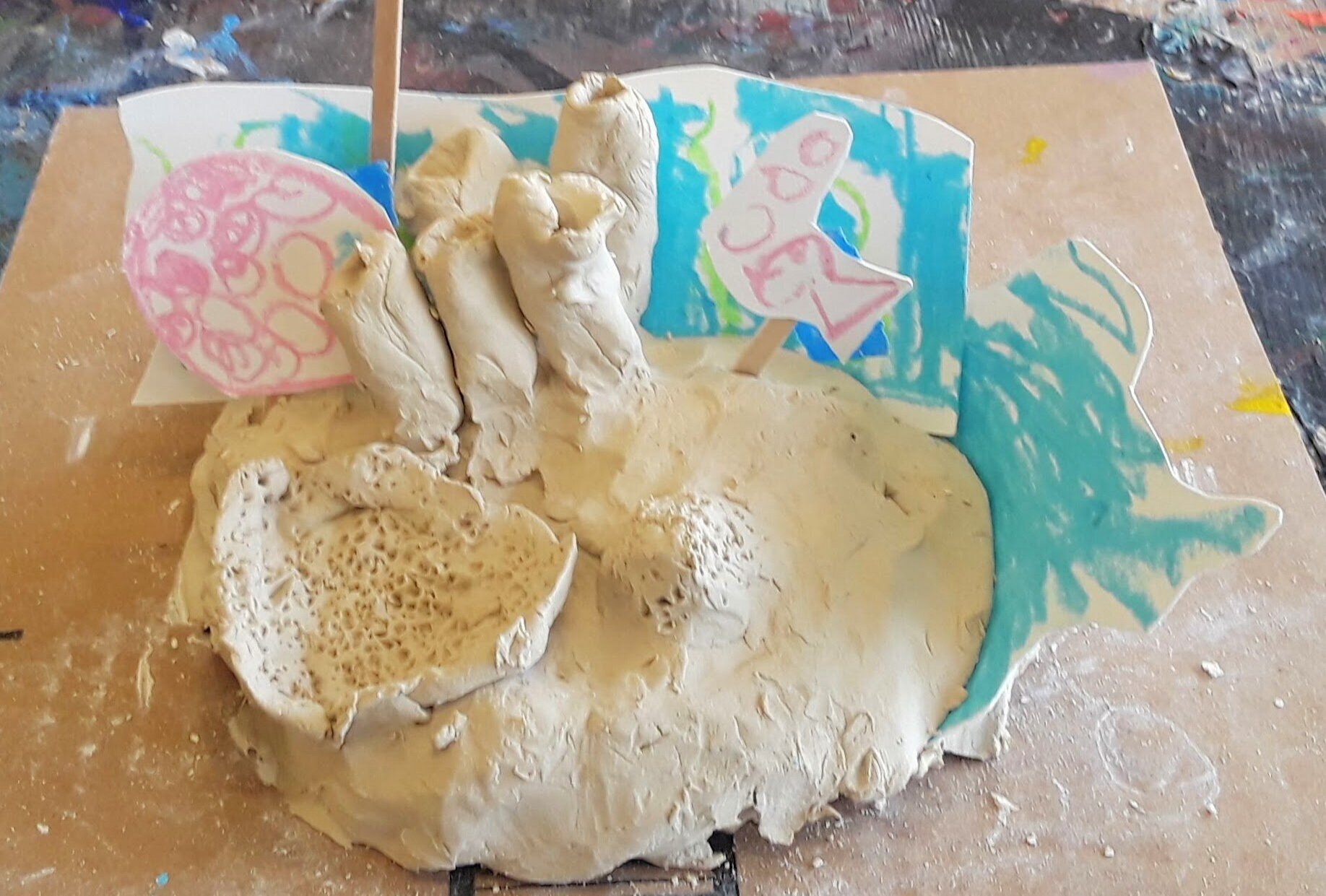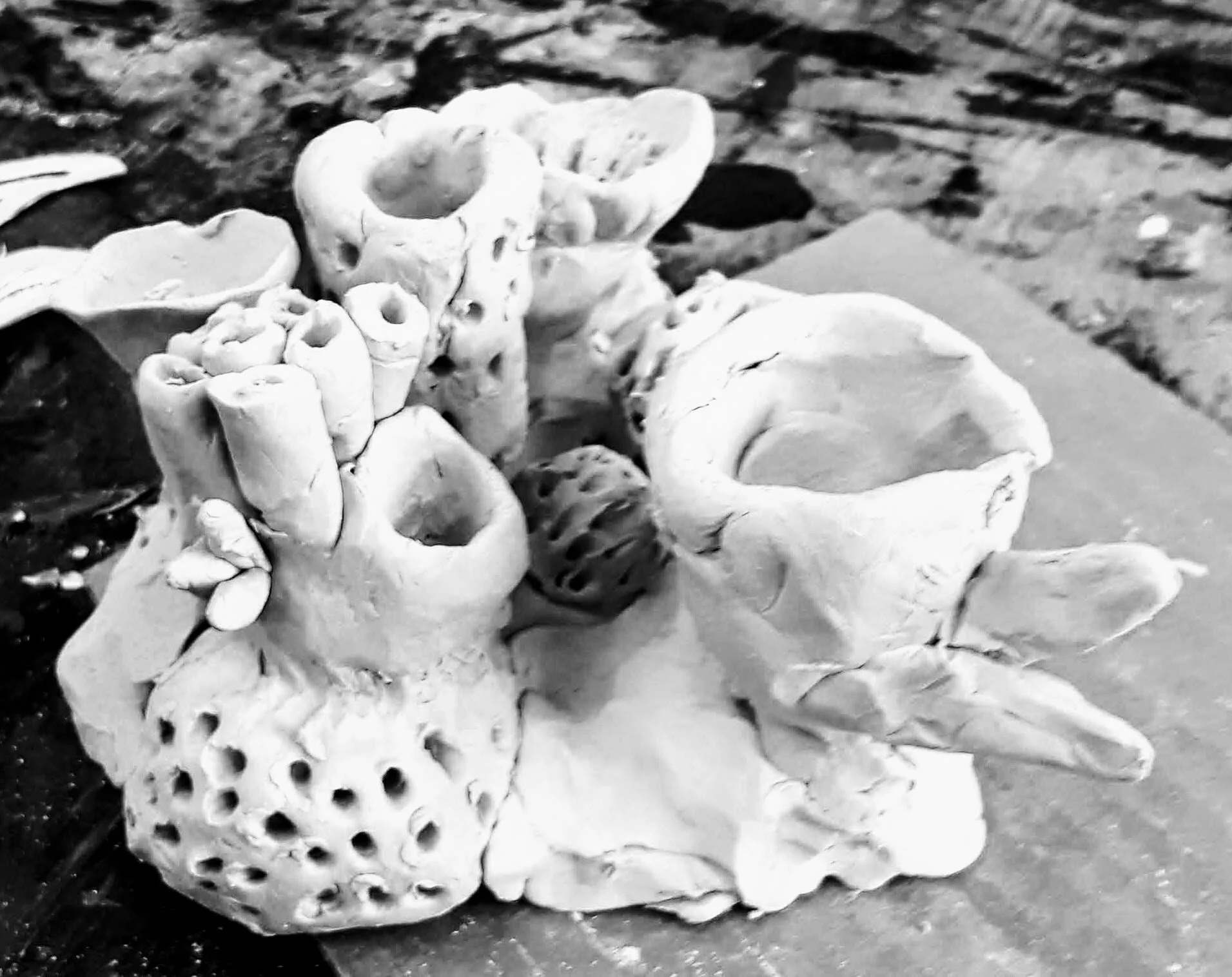
Clay is a medium that is one of the most technical art forms to master as an adult but one of the most fun, in my experience, children can’t wait to get their hands on. Although learning how to throw on the wheel and glaze pottery is reserved for older youth and adults, there are still plenty of nuances to teach about how “mud” works and beneficial concepts to learn.
Getting clay into children’s hands from an early age, allowing them to squish, bend, pull, squeeze, etc. helps build the large and small muscles, helps to improve dexterity and fosters hand and eye cordination. Manipulating a mound of clay until it tranforms into something helps build attention span and the ability to focus. Clay play also helps children to think three dimensionally and that art can be viewed from all sides. It helps bridge the gap between mediums in understanding that objects are more than 2-d shapes, but also forms in space.
Clay curriculum for children includes teaching methods like hand building, slab building, coiling and pinch pots. Understanding clay’s properties teaches techniques like scoring and smoothing to adhere two peices and how to use different tools to get different textures.
Courtney Mattison Clay Coral Reefs
This clay project was based off of a modern day artist named Courtney Mattison. Mattison, an L.A. based artist is an ocean advocate who creates life size solo and sculptural coral ceramic pieces to illuminate the issues of climate change on the ocean, specifically cloral bleaching. We prodded, dabbed, pinched and built forms out of air dry clay to create coral reefs. These were then coupled with paper and wooden sticks to add fun elements to our reefs.





















'Coral Pinch Pot Characters' (clay, paint, live succulents)

Minoru Ohira Clay Wooden Animals
These clay/wooden animals were based off of a Japanese born artist named Minoru Ohira. Ohira uses found materials, specifically wood, in ways to make them look like a reinvented material. His reverence to nature was used as inspiration to this clay project. Some made their animal forms out of pinch pots and others out of coils. It was coupled with teaching out of the box thinking with how wood pieces, also inspired by Ohira, could be incorporated to add appropriate texture to their animals.









'Minoru Ohira Inspired Pinch Pot Gnomes'

Students finishing their clay gnomes by adding natural elements and paint!
Mexican Folk Art ‘Alebrijes’







